Case Law Details
Navin Jolly Vs ITO (Karnataka High Court)
Multiple independent residential units in same building can be treated as one residential unit for section 54F Exemption and usage of the property has to be considered in determining whether it is a residential property or a commercial property
A bench of this court in while interpreting Section 54F of the Act has held that provisions of Section 54F is a beneficial provision for promoting construction of residential houses and has to be construed liberally. Kerala, Delhi, Allahabad, Calcutta and Hyderabad High Courts have taken a view that usage of the property has to be considered in determining whether it is a residential property or a commercial property and Madras High Court in supra has held that expression ‘residence’ implies some sought of permanency and cannot be equated to the expression ‘temporary stay’ as a lodger.
Learned counsel for the revenue have fairly submitted that out of nine apartments, seven flats have been sanctioned for commercial purposes. Therefore, the dispute only survives in respect of two apartments, which have been sanctioned for residential purposes and are being used for commercial purposes as serviced apartments. The usage of the property has to be considered for determining whether the property in question is a residential property or a commercial property. It is not in dispute that the aforesaid two apartments are being put to commercial use and therefore, the aforesaid apartments cannot be treated as residential apartments. The contention of the revenue that the apartments cannot be taxed on the basis of the usage does not deserve acceptance in view of decisions of Kerala, Delhi, Allahabad, Calcutta and Hyderabad High Courts with which we respectfully concur.
Alternatively, we hold that assessee even otherwise is entitled to the benefit of exemption under Section 54F(1) of the Act as the assessee owns two apartments of 500 square feet in same building and therefore, it has to be treated as one residential unit. The aforesaid fact cannot be permitted to act as impediment to allowance of exemption under Section 54F(1) of the Act. Similar view was taken by Delhi High Court in case of Geeta Duggal wherein the issue whether a residential house which consists of several independent residential units would be entitled to exemption under Section 54F(1) of the Act was dealt with and the same was answered in the affirmative.
FULL TEXT OF THE HIGH COURT ORDER /JUDGEMENT
This appeal under Section 260A of the Income Tax Act, 1961(hereinafter referred to as the Act for short) has been preferred by the assessee. The subject matter of the appeal pertains to the Assessment year 2006-07. The appeal was admitted by a bench of this Court vide order dated 06.06.2012 on the following substantial questions of law:
(i) Whether the tribunal is justified in law in confirming the denial of exemption claimed by the appellant under Section 54F of the Income-Tax Act, 1961, on the facts and circumstances of the case?
(ii) Whether the tribunal erred in law in interpreting the meaning of the word residential house used in Section 54F(1) proviso (a) (i) of the Income Tax Act?
(iii) Whether the authorities below are justified in law in holding that a property used for the commercial purpose, falls within the meaning of residential house as per the proviso (a) (i) to Section 54F(1) of the Act on the facts and circumstances of the case?
2. Facts leading to filing of this appeal briefly stated are that assessee is an individual and is Director of M/s Aburge India Property Services Pvt. Ltd., Bangalore. The assessee filed his return of income for Assessment year 2006-07 on 30.10.2006 declaring income of Rs.53,06,473/-. The return filed by the assessee was selected for scrutiny and notice under Section 143(2) of the Act was issued. The assessee stated that he had sold shares in the company viz., M/s Corporate Leisure Resorts and Hotels Pvt. Ltd., during financial year 2005-06 and derived long term capital gain of Rs.1,55,47,315/-. The appellant further declared that he had constructed a residential property during the year situate at 808/7 and 808/8 Kaikondanahalli, Sarjapur, Bangalore. The appellant claimed exemption under Section 54F of the Act to the extent of Rs.1,55,47,315/-Before the assessing officer, the assessee agreed voluntarily to offer a sum of Rs.4,17,339/- for taxation.
3. The assessing officer vide order dated 31.12.2008 inter alia held that the assessee owns nine residential flats in his name and that he is deriving the income from the residential flats and declared the same under the head income from house property during Assessment year 2006-07 and is therefore, not eligible to claim exemption by invoking proviso (a)(i) and (b)to Section 54F (1). The assessing officer further recorded a finding that properties owned by the appellant are residential apartments. Accordingly, exemption under Section 54F of the Act was denied.
4. Being aggrieved, the assessee filed an appeal. The Commissioner of Income Tax (Appeals) by an order dated 31.05.20 10 inter alia held that by virtue of clauses (a)(i) and (b) of proviso to Section 54F(1), the assessee is ineligible to claim exemption.It was further held that from perusal of the record, it is evident that out of nine properties two properties viz., Unit No.204 and 605 of Oxford Suites have got plan sanction of residential in nature and therefore, the claim of the assessee that the properties be not treated as residential houses cannot be accepted. It was further held that on the date of transfer of original asset the assessee was in possession of atleast two residential houses and therefore, the appellant is not entitled to the benefit of exemption under Section 54F of the Act. It was also held that in respect of six out of seven properties, from the records it is evident that they have been let out by the assessee to different companies and rental income is being shown regularly in the returns as income from house property and even if the nature of plan sanction is commercial, the appellant cannot be allowed to take a different stand and to contend that the properties are not residential houses. It was also noted that by explanatory circular dated 30.06.1982, the word ‘residential house’ includes not only self occupied properties but also let out properties. It was further held that the assessee is not entitled to benefit of deduction under Section 54F of the Act. Accordingly, the appeal was dismissed.
5. The assessee approached the Income Tax Appellate Tribunal. The tribunal by an order dated 29.03.2011 inter alia held that assessee should not have more than one residential unit on the date of transfer of the original asset. It was further held that it is immaterial as to how the assessee utilized the residential units and whether these residential units are used for commercial purposes or residential purposes, so long as these units were recognized as residential units. Therefore, it was held that the assessee cannot claim the benefit of exemption under Section 54F of the Act. The appeal preferred by the assessee was therefore, dismissed. In the aforesaid factual background, this appeal has been filed.
6. Learned Senior Counsel for the assessee submitted that apartments No.204 and 605 viz., Oxford suites is a building comprising units offered for serviced apartments and each floor consists of eight apartments of 500 square feet floor area and the appellant had let out both the properties to be used as commercial / serviced apartments. Therefore, the aforesaid service dapartments could not have been treated as residential units and in fact the same were commercial units and were being used by serviced apartments by the companies to accommodate their guests. It is also urged that clause (a) (i) of proviso to Section 54F(1) are not attracted and clause (b) of proviso to Section 54F(1) are also not attracted. It is further submitted that the authorities erred in law in interpreting the meaning of the word ‘residential house’ used in proviso (a)(i) to Section 54F(1) of the Act and it is submitted that the expression ‘residence’ implies some sought for permanency and cannot be equated to the expression ‘temporary stay’ as a lodger. It is also argued that usage of property has to be taken into account while determining whether the property is a residential property or commercial property and the beneficial provisions of the Act have to be construed liberally in order to achieve the purpose for which it were incorporated. Alternatively, it is submitted that even if two apartments are treated to be residential, then also since, they are situate in the same building, therefore, the apartments have to be treated as one residential only. In support of aforesaid submissions, reliance has been placed on the following decisions ‘.
7. On the other hand learned counsel for the revenue submitted that clause (a) to proviso to Section 54F(1) does not apply but clause (b) to proviso to Section 54F(1) applies to the fact situation of the case. It is submitted that the question whether the property is a residential or commercial property has to be determined on the basis of the sanction granted in respect of the same and the nature of its use by the assessee is not the criteria. It is also argued that the classification of the property either as residential or commercial has to be taken into account for the purpose of taxation. It is however submitted that out of nine flats, seven flats have been sanctioned for commercial purposes and only two flats have been sanctioned as residential units which are being used for commercial purposes. It is also urged that requirement as prescribed in proviso to Section 54F(1) is of owning a residential house and not of its user. Our attention has also been invited to Section 32(1) of the Act and it has been stated that the legislature in Section 32(1) of the Act has used the expression ‘owned’ and ‘used’simultaneously, whereas, the same has not been done in proviso to Section 54F(1) of the Act. It is argued that language of a taxing statute should ordinarily be understood in the sense in which it is harmonious with the object of statute to effectuate the legislative animation and taxing statute deserves to be strictly construed. In support of aforesaid proposition, reliance has been placed on decision of the supreme court in .
8. We have considered the submissions made on both the sides and have perused the record. Before proceeding further, it is apposite to take note to Section 54F(1) of the Act, which is reproduced below for the facility of reference:
# (1) Subject to the provisions of sub- section (4), where, in the case of an assessee being an individual or a Hindu undivided family, the capital gain arises from the transfer of any long-term capital asset, not being a residential house (hereafter in this section referred to as the original asset), and the assessee has, within a period of one year before or two years after the date on which the transfer took place purchased, or has within a period of three years after that date constructed, one residential house in India (hereafter in this section referred to as the new asset), the capital gain shall be dealt with in accordance with the following provisions of this section, that is to say,—
(a) if the cost of the new asset is not less than the net consideration in respect of the original asset, the whole of such capital gain shall not be charged under section 45 ;
(b) if the cost of the new asset is less than the net consideration in respect of the original asset, so much of the capital gain as bears to the whole of the capital gain the same proportion as the cost of the new asset bears to the net consideration, shall not be charged under section 45:
%,-./010 that nothing contained in this sub- section shall apply where—
(a) the assessee,—
(i) owns more than one residential house, other than the new asset, on the date of transfer of the original asset; or
(ii) purchases any residential house, other than the new asset, within a period of one year after the date of transfer of the original asset; or
(iii) constructs any residential house, other than the new asset, within a period of three years after the date of transfer of the original asset; and
(b) the income from such residential house, other than the one residential house owned on the date of transfer of the original asset, is chargeable under the head “Income from house property”.
Explanation.—For the purposes of this section,— “net consideration”, in relation to the transfer of a capital asset, means the full value of the consideration received or accruing as a result of the transfer of the capital asset as reduced by any expenditure incurred wholly and exclusively in connection with such transfer.
9. From close scrutiny of Section 54F(1) of the Act, it is evident that in order to attract Section 54F(1) of the Act, the conditions stipulated in clauses (a) and (b) of proviso to Section 54F(1) have to be complied with as the legislature has used the expression ‘and’ at the end of clause (a) of proviso to Section 54F(1) of the Act. It is pertinent to note that under Section 22 of the Act any income from any buildings irrespective of which the use which has to be treated under the head ‘income from house property’. It is well settled legal proposition that a provision in a taxing statute providing incentive for promoting growth and development has to be construed liberally so as to advance the object of the Section and not to frustrate it.
A bench of this court in while interpreting Section 54F of the Act has held that provisions of Section 54F is a beneficial provision for promoting construction of residential houses and has to be construed liberally. Kerala, Delhi, Allahabad, Calcutta and Hyderabad High Courts have taken a view that usage of the property has to be considered in determining whether it is a residential property or a commercial property and Madras High Court in supra has held that expression ‘residence’ implies some sought of permanency and cannot be equated to the expression ‘temporary stay’ as a lodger.
10. In the backdrop of aforesaid well settled legal principles, the facts of the case in hand may be examined. Learned counsel for the revenue have fairly submitted that out of nine apartments, seven flats have been sanctioned for commercial purposes. Therefore, the dispute only survives in respect of two apartments, which have been sanctioned for residential purposes and are being used for commercial purposes as serviced apartments. The usage of the property has to be considered for determining whether the property in question is a residential property or a commercial property. It is not in dispute that the aforesaid two apartments are being put to commercial use and therefore, the aforesaid apartments cannot be treated as residential apartments. The contention of the revenue that the apartments cannot be taxed on the basis of the usage does not deserve acceptance in view of decisions of Kerala, Delhi, Allahabad, Calcutta and Hyderabad High Courts with which we respectfully concur.
11. Alternatively, we hold that assessee even otherwise is entitled to the benefit of exemption under Section 54F(1) of the Act as the assessee owns two apartments of 500 square feet in same building and therefore, it has to be treated as one residential unit. The aforesaid fact cannot be permitted to act as impediment to allowance of exemption under Section 54F(1) of the Act. Similar view was taken by Delhi High Court in case of Geeta Duggal wherein the issue whether a residential house which consists of several independent residential units would be entitled to exemption under Section 54F(1) of the Act was dealt with and the same was answered in the affirmative. The appeal against the aforesaid decision was dismissed by the Supreme Court by an order reported in # 34564778-6 . We agree with the view taken by Delhi High Court.
12. For the aforementioned reasons, the substantial questions of law are answered in favour of the assessee and against the revenue. In the result, the orders of the assessing officer and Commissioner of Income Tax (Appeals) and Income Tax Appellate Tribunal insofar as it pertains to denial of exemption under Section 54F(1) of the Act to the appellant is hereby quashed. In the result, appeal is allowed.






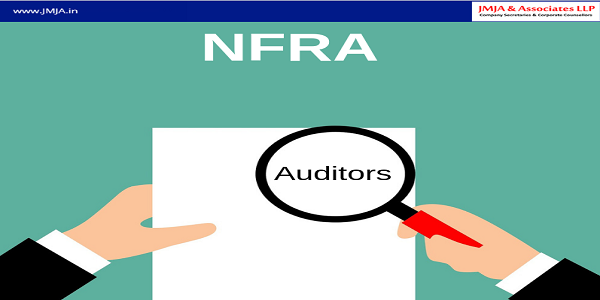



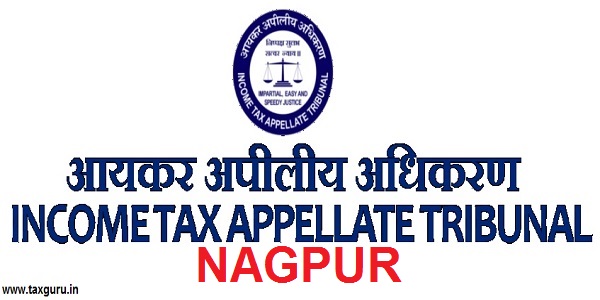
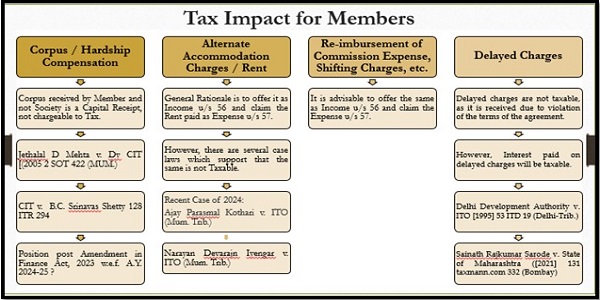



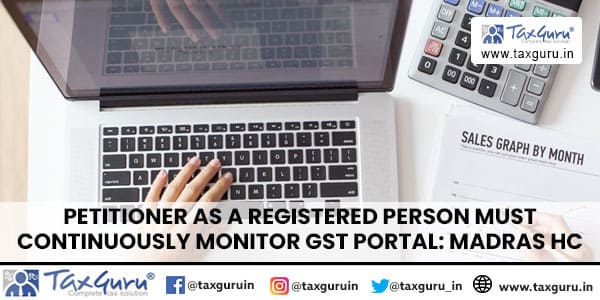
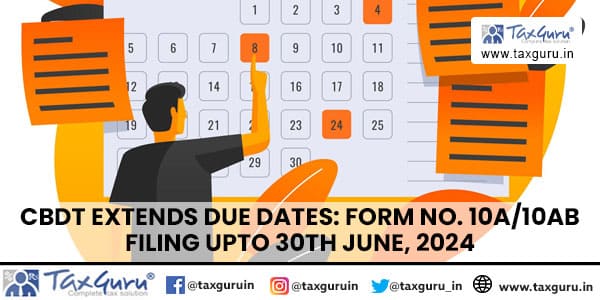
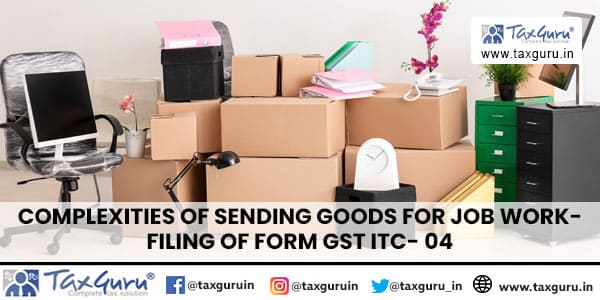


if an assessee purchase one unit of flat 3A in the year 2012 and thereafter he purchased another flat 3B on the same floor and adjacent to old one in 2021 and started residing there after merging with the old one creating it as a single unit. whether these merging will be treated single unit used for residential purpose for I.T. purpose. Please provide your opinion.
IF my two flats are considered as one unit in BMC property tax or assessement. Can society charge one maintenance
Raul
Rider (to supplement ) :
wrt – “11. Alternatively, we hold that assessee even otherwise is entitled to the benefit of exemption under Section 54F(1) of the Act “……As the assessee OWNS TWO APARTMENTS of 500 square feet IN SAME BUILDING AND THEREFORE, IT HAS TO BE TREATED AS ONE RESIDENTIAL UNIT…………………….”
FONT< There is an apparent incongruity / incoherent thinking behind the reasoning given, on the ground of which the view taken by the HC has turned out to be in favour of the assessee / adverse to the Revenue. So much so, in the possible further proceedings the Revenue might be expected to accordingly address its arguments and additionally stress why the line of reasoning so adopted is logically faulty and apparently unsound.
INSTANT
It has been commonly believed that the 2014 Amendment of the provisions of the IT Act has effectively cried a halt to the till then ongoing / raging controversies on ‘the issue’. But lo ! the way the HC Judgment has been read and ‘discussed’ in a recently displayed write-up, on this website itself, – wrongly though in own view- appears to prophesy otherwise .
For MORE: Anyone interested may look up the related Post on FB / Linkedin discussing the most likely pitfalls / unwarranted litigation sure to ensue, if the 2014 Amendment were to be construed or viewed in such a manner as reading down the intent and implications of the referred amendment of the law !
courtesy